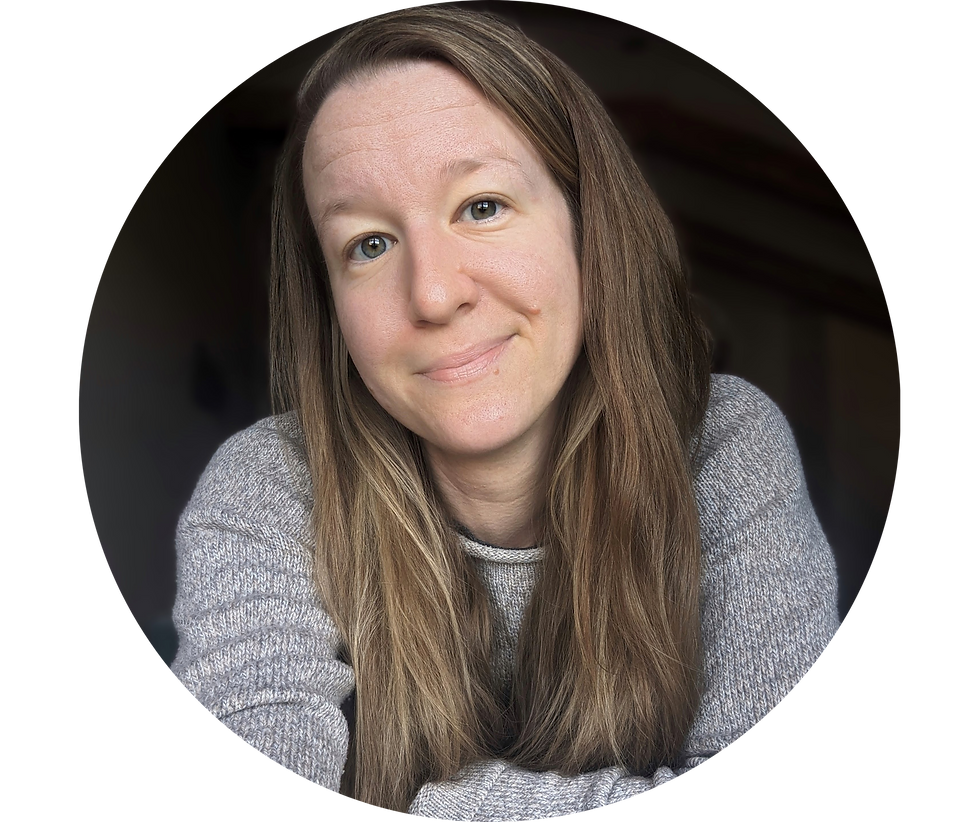10 Lessons from Month 1 of Writing Draft 1
- Katie Allen

- Apr 11, 2024
- 5 min read
I’m back with a tidy Muggle list of specific lessons from my first month of writing the first draft of my next memoir. May it help you make wiser choices in your own writing life and avoid Dead Butt Syndrome (see #7).
(If you missed Part 1, you can read it here.)
10 Lessons from Month 1 of Writing Draft 1
from within the magical vessel of The Stone Boat in Rabanal, Spain

1. It’s Harder than I Thought
Memoir writing is not just recording down events. It’s also not just choosing your favorite literary devices to bring them to life on the page. Though I knew I’d be mining memories for meaning, I was surprised at how often I’d revisit every dark corner of my life. As new themes or questions emerged, I’d return to the past to reexamine everything again through that lens, searching for more.
Three weeks of doing this nonstop gave me a kind of Time Traveler Whiplash.
Thankfully, the remedy was simple (which meant that it took me ages to figure out, obviously): take a break. Have a snack. Rest.
I think it’s important to share about the difficulty of this process, especially for those who have experienced trauma. Memoir writing can be emotionally draining, triggering, and potentially unsafe if you hang out in the past for too long.
2. Starting with The Trauma: Just Don’t
I didn’t plan on doing it this way, but it’s what happened. I don’t recommend starting with your most traumatic experiences, though they’re likely what brought you to the page. Doing so may put you at risk of overwhelm and lead you to quit before you even truly begin. And we need your stories!
Please take good care of yourself and be mindful. Consider working on other scenes first to get the flow going and make sure you continue whatever healthy practices you already have.
3. Stay in Therapy. Or Start.
Besides my daily mindfulness meditation practices, I’ve learned just how important my reading and writing communities and other support groups are during this time. I’m glad I didn’t stop hosting or joining them to “focus” on my work. Each one is an arm floaty for my soul that keeps me above water.
In other words, stay in therapy while writing, or start if you know what’s good for you.
4. It’s “Draft” not “Book”
I’m finding it helpful to call it a “draft” and not a “book,” per Rick Rubin’s advice in his book The Creative Act. Because it’s true. I hope it’ll become a book, but if just writing a certain number of words equated a book, I’d have over a hundred books.
But no. This is a draft, a get-it-down-and-make-it-pretty-later situation.
5. Write by Hand
Inconveniently, yet not surprisingly, I’ve returned to writing draft 1 mostly by hand in my big green notebook. I’d hoped to stay in my virtual workspace to keep things more organized. But the bottom line is: my notebook is where I feel most open and allowed to meander and make mistakes. My laptop is where editing and revision happen. It’s just too dang stressful and distracting in there.
Although handwriting is more time-consuming, it has increased both the quantity and quality of my writing.
So, I’ll be sticking with the hand cramps… for now.
6. Find Something Worse to Do
You know how, when you finally sit down to write, you suddenly discover that you must deep clean the dishwasher? Even if you don’t have one?
Well, tax season is upon us. As I looked at my “to do” list the other day, I found writing wasn’t so hard after all.
Maybe this is hack-able.
7. Move
It was so cozy at first to stay within the walls of the Stone Boat with its wood-burning stove and soft candlelight on the sparse wooden tables. I was so absorbed in the writing that I was only too happy to watch the puffy snowflakes falling just outside the window rather than walk in them. After a couple weeks of over-hermiting, though, and my body started protesting.
Being folded over a desk all day is not only bad for our backs and bottoms (ever hear about Dead Butt Syndrome?), but it also takes a mental toll. When working with painful experiences, it’s important to step away from the story as needed for a literal and mental breather and shake it out through movement. Walk, stretch, or do yoga, but get your butt out of the chair.
During the darker “time travel” days, I’d noticed a gradual clenching happening in my body and sometimes in my chest. With my history of anxiety, I knew movement would be part of the answer. So, I started taking more walks, which seems so simple (because it is) and helped enormously.
I also found that my regular sitting meditation practice became so difficult that I didn’t want to do it anymore. Thankfully, there are many ways to practice. I simply shifted to meditations that got me out of my head and not anchoring on my breath. These include the Body Scan, Walking Meditation, and Loving-Kindness Practice. It was such a relief.
8. Unplug
The movement helped, but I was tempted to listen to an audiobook while out walking. Yet it’s usually when we’re doing such everyday tasks that a beautiful bud of an idea will finally have space to bask in the sun and breathe. It then unfurls and pops through the compost we’ve been churning daily. This happened to me recently when I was chopping a red pepper. I’d almost popped in my headphones but paused (thank you mindfulness practice!) and chose silence as I know from experience that boredom is a birthplace of creativity.
Not two minutes later, and I dropped the knife mid-slice as Boredom gifted me with a sentence that led me into a section I’d been struggling with. I rushed to the nearest writing instrument to capture it, which turned into a mad 45-minute writing spree.
It’s in these moments, when our brain is panting and trying to catch her breath, that something snaps into place. It makes me think of a snow globe, and how if you keep shaking it, the flurries will obscure what’s at its center. When you stop shaking it, they settle and you can see what’s there more clearly.
9. Turn Off the Phone
Similarly, I’ve learned that my cell phone is my worst enemy. Even if it’s in on another floor, I’ll find myself with it in my hands when I swear I was just about to start writing the next chapter.
The days I turn it off and keep it off until I’m done working have been, by far, the most productive and wonderful. Free from its pull and the garbage it would distract me with, I get in flow sooner and stay in it longer.
If you’re interested in understanding screens and social media addiction better and finding ways to have a healthier relationship with them, I recommend reading Irresistible: The Rise of Addictive Technology and the Business of Keeping Us Hooked by Adam Atler.
10. Keep the Momentum Going
Honestly, I’m exhausted. Part 3 will elaborate further. In short, I’ve found different ways to keep the momentum going, which I’ve been thinking about as “feeding the fire.” The inspiration? The other day, I was saying those words aloud when I was putting wood into the dying fire. Suddenly, two pages flew out of me about fire and momentum, which I’ll share with you in the next post.
What about you? If you’ve delved into a first draft before, what have you learned?
Keep writing,
Katie

PS: let's write together soon!










Commentaires